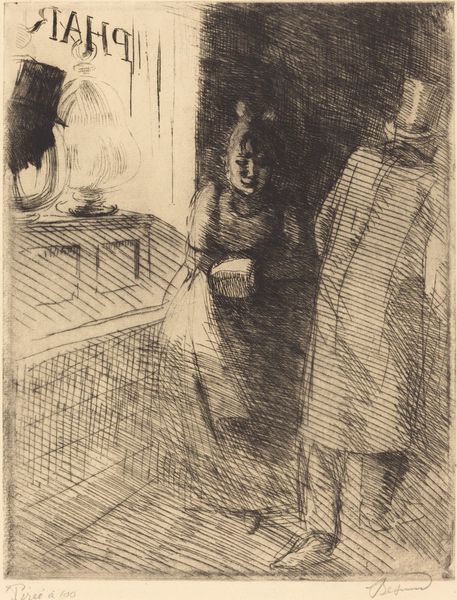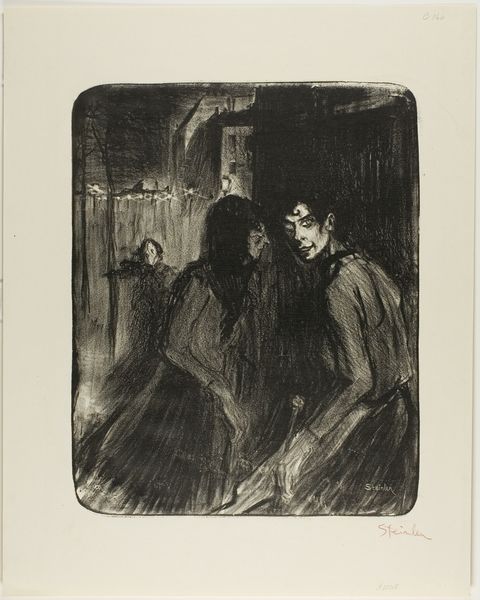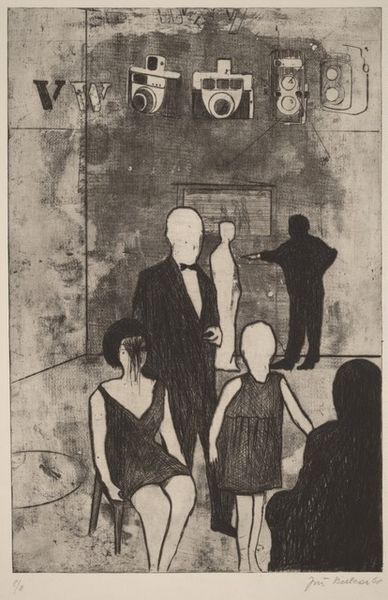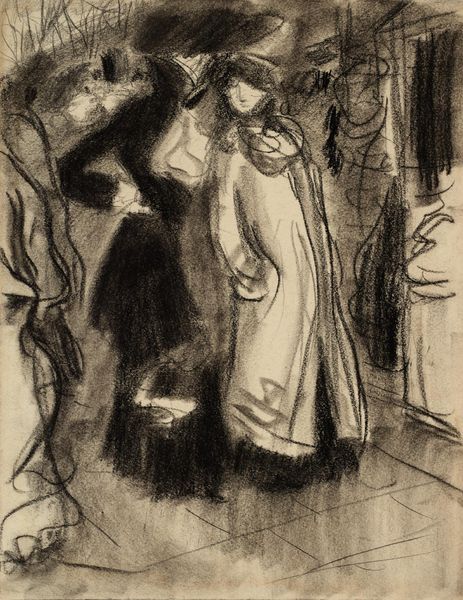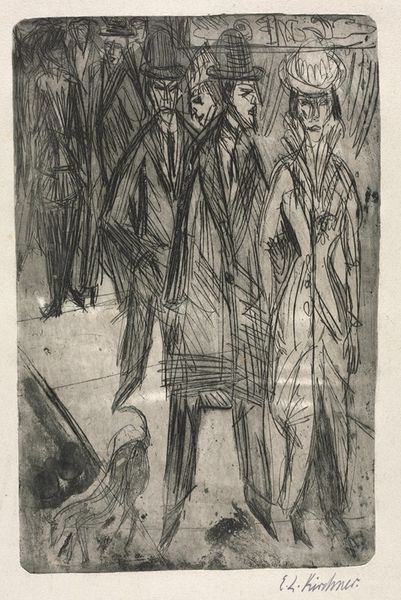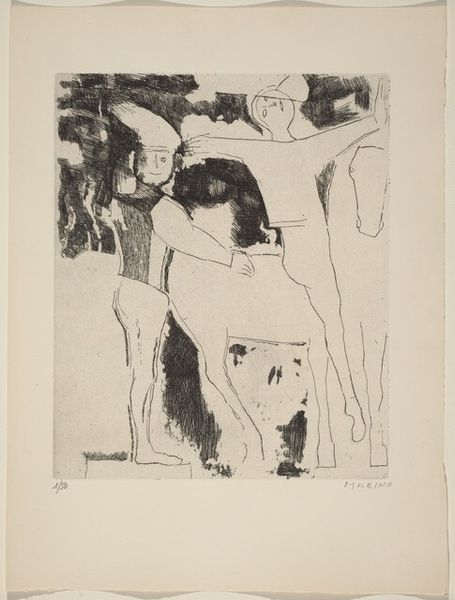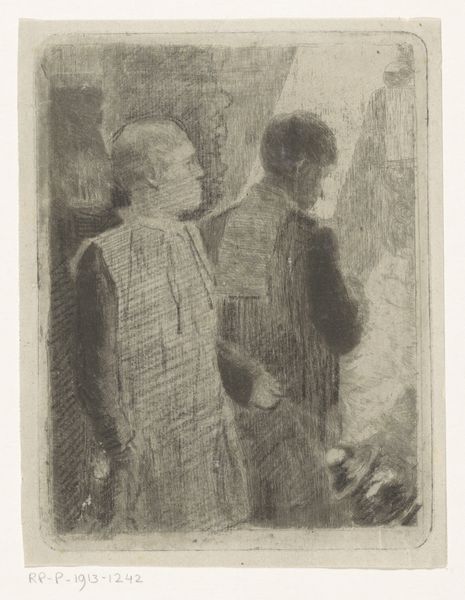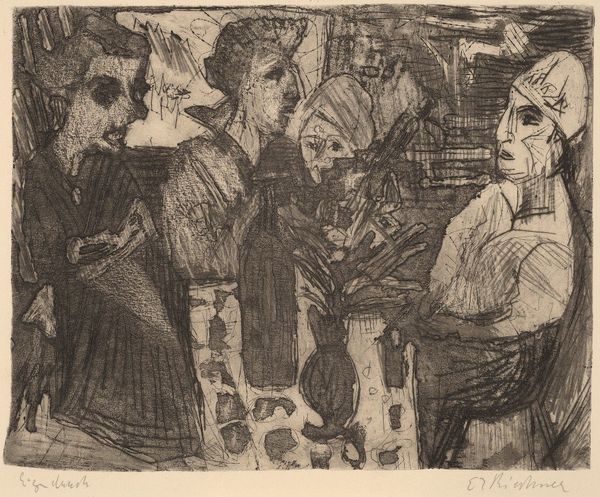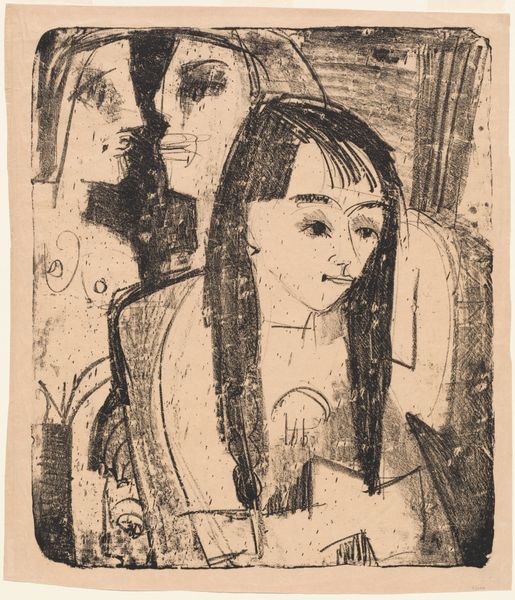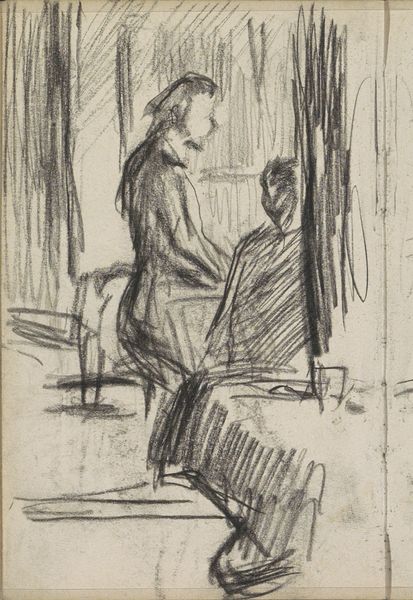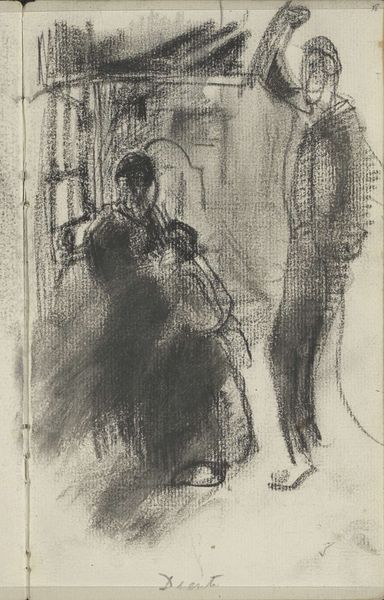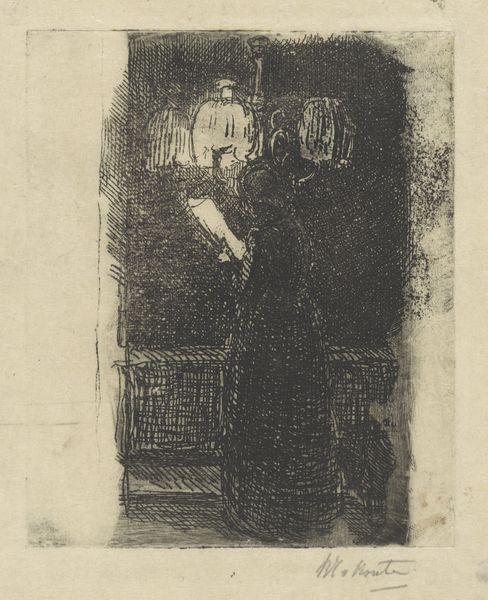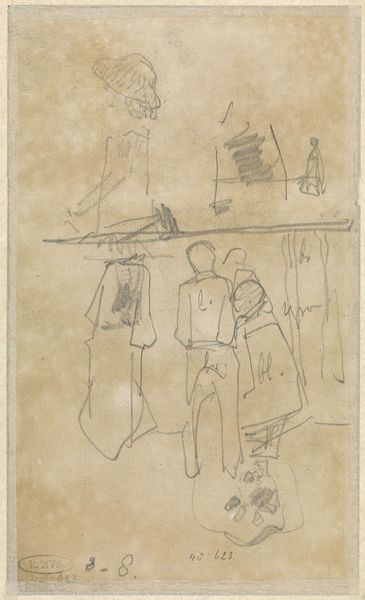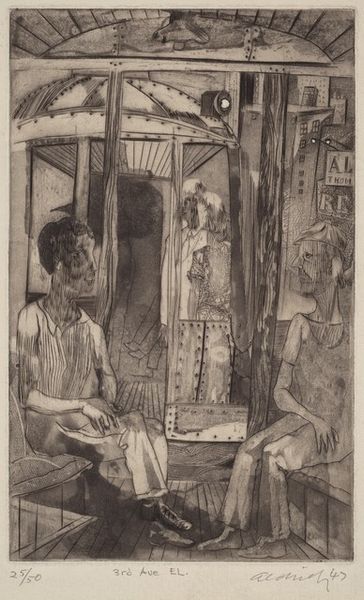
print, etching
# print
#
etching
#
figuration
#
social-realism
Dimensions: plate: 49.6 x 32.2 cm (19 1/2 x 12 11/16 in.) sheet: 61.2 x 41.2 cm (24 1/8 x 16 1/4 in.)
Copyright: National Gallery of Art: CC0 1.0
Curator: Jiri Balcar's "Party II," an etching from 1968. Something about it makes me feel uneasy. What's your take? Editor: The faces seem to be missing, right? Almost erased, replaced by darkness. Like they are ghosts. It feels eerie, like a party happening in some strange purgatory. Curator: You feel that, too? Good, it’s not just me. Etching— the scratching, the biting of acid—it’s so visceral. In the 1960s in Czechoslovakia, under Soviet influence, there was huge censorship, an end to free expression. Social Realism became pretty stale, with lots of pressure on artists to follow the norms. Maybe this represents the angst that many people felt then? Editor: Definitely. There are visual clues—the faceless figures, their almost featureless dresses; it feels representative of communist power's intention of controlling individuals, turning citizens into anonymized entities of the state, devoid of personality, monitored by the authorities. See the two car spark plugs on the wall! Is he trying to be playful with an element of humor, even a nod to some kind of industrialisation theme that socialist leaders emphasized? Curator: Or are they spying devices? They could just be machine parts, which do give the print this factory feel that contrasts starkly with the "party" theme in the title. So are these working class people having a break or going to clock in? The figure slumped at the bottom right, that seems so representative of a dejected figure unable to feel hopeful. Also, look at the time frozen on the clock face! Such melancholy! Editor: And yet, there's some interaction between those women and him; it feels like there might be solidarity even when things are hopeless. What’s up with the architectural drawing hung up high on the wall—some reference to Soviet building? Curator: Perhaps! This print contains many ambiguities which may allude to multiple layers. Thank you for the thoughts! This artwork makes me think about what power dynamics mean to us and it is very much welcome! Editor: Precisely. To engage with its themes makes you engage with a turbulent era in the former Czechoslovakia—one that still speaks to us today.
Comments
No comments
Be the first to comment and join the conversation on the ultimate creative platform.
